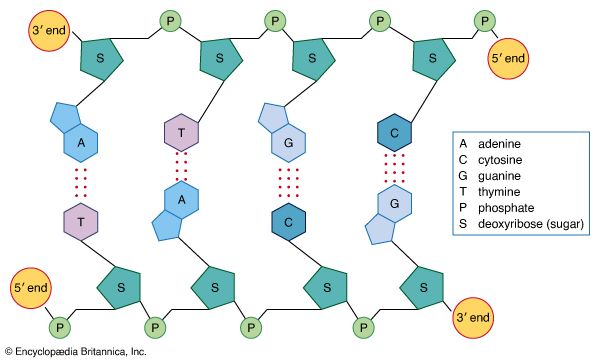cytosine
- Related Topics:
- RNA
- DNA
- pyrimidine
cytosine, a nitrogenous base derived from pyrimidine that occurs in nucleic acids, the heredity-controlling components of all living cells, and in some coenzymes, substances that act in conjunction with enzymes in chemical reactions in the body.
Cytosine is one of several types of bases that are incorporated into the nucleic acid molecule. Nucleic acids are composed of a five-carbon sugar bound to a phosphoric acid, along with a nitrogenous base. Deoxyribonucleic acid (DNA), the hereditary material of most living organisms, consists of the five-carbon sugar deoxyribose with a phosphate linkage, to which is attached cytosine or any of three other bases, which together form two complementary pairs. Cytosine’s complementary base in the DNA molecule is guanine.
Cytidine is a structural subunit of ribonucleic acid that consists of cytosine and the sugar ribose. Cytidine triphosphate (CTP), an ester of cytidine and triphosphoric acid, is the substance utilized in the cells to introduce cytidylic acid units into ribonucleic acids. CTP also reacts with nitrogen-containing alcohols to form coenzymes that participate in the formation of phospholipids.










